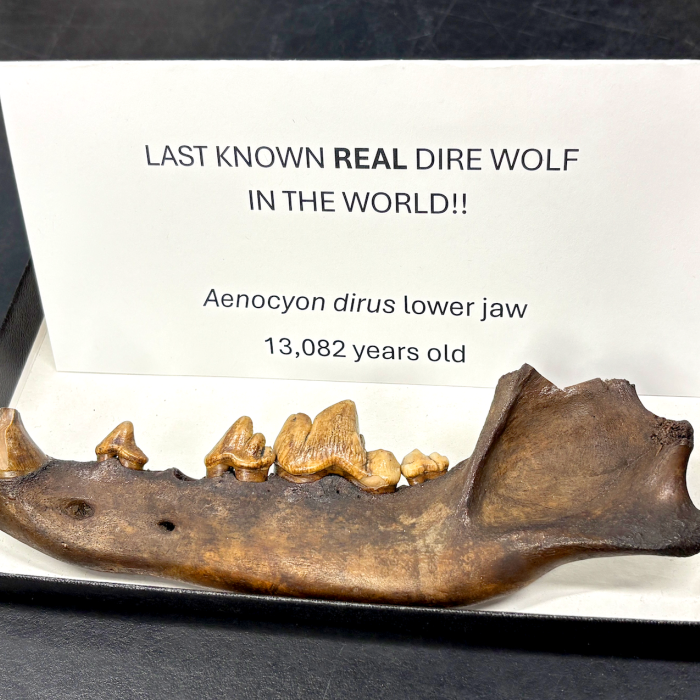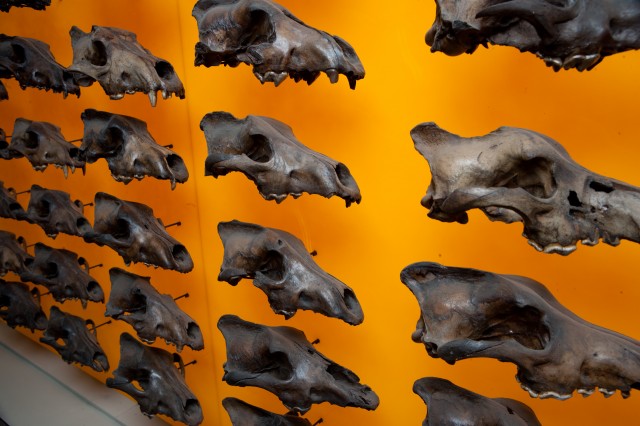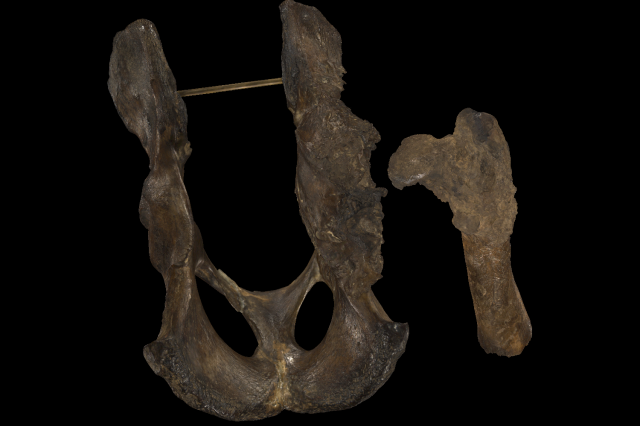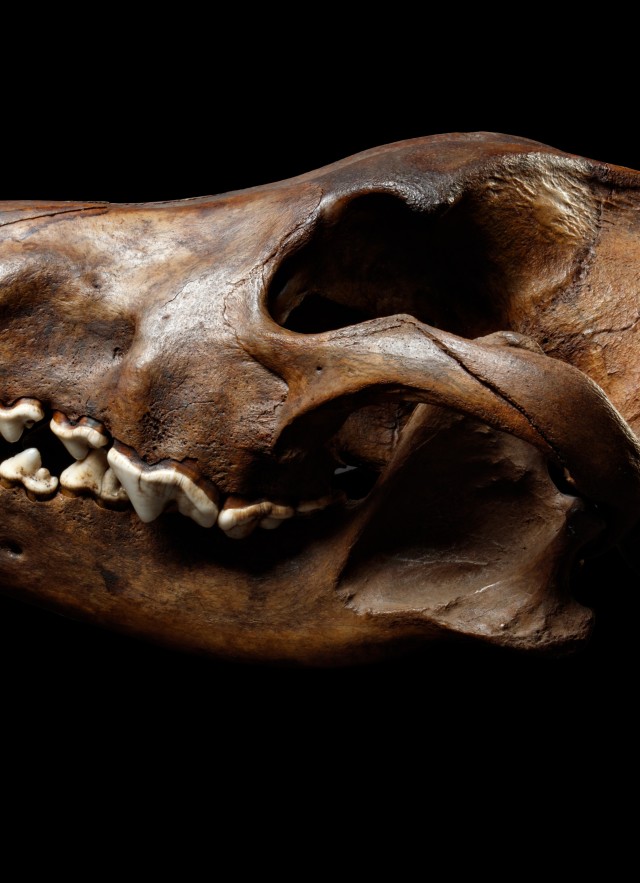
Updated April 15, 2025
In light of the announcement of three genetically modified wolf cubs widely covered as dire wolf "clones", we re-connected with Dr. Mairin Balisi, now Augustyn Family Curator of Paleontology at the Alf Museum and La Brea Tar Pits Research Associate (former Postdoctoral Research Fellow at the Tar Pits), to update us with some of her thoughts on the announcement and its connection to the 2021 study that reclassified dire wolves into a new genus (Aenocyon dirus). Balisi, a paleontologist who studies the ecology and evolution of mammal carnivores, was not a part of either team.
“This new genome made use of two dire wolf specimens from museums,” says Balisi. “One was from Ohio, and the other was from Idaho (so, yay museums). Neither is from La Brea Tar Pits, and both preserved some ancient DNA. These two specimens were also used for the 2021 study, and the team led by Colossal (and including many of the co-authors from the 2021 study) revisited these two specimens in particular and were able to re-sample them and obtain new material and more coverage of the genome than the 2021 study. The study detailing the new genome is awaiting peer review and publication.”
“So, with these three pups, can we say that we've brought back the dire wolf? I would say no. I don't think that we can ever bring back an extinct species for multiple reasons. Genetically speaking, the more recently extinct a species is, the easier we would expect it to quote-unquote, bring it back because more of the genetic material would be intact,” says Balisi. “The fossil dire wolves that were sampled for the new genome are from about 72,000 years ago and 13,000 years ago, and that is quite a long time. Their genomes are not complete, even though a good amount was covered. We can never have the full picture, and that's just talking about the genetics.”
Published January 28, 2021
Like many extinct animals, dire wolves have come to mean different things in popular imagination—semi-mystical creatures in the popular Game of Thrones series or the title of a jam band classic by the Grateful Dead. Their meaning has changed for paleontologists as well. A study (not involving NHM or La Brea Tar Pits researchers) published in Nature has rewritten the natural history of the dire wolf.
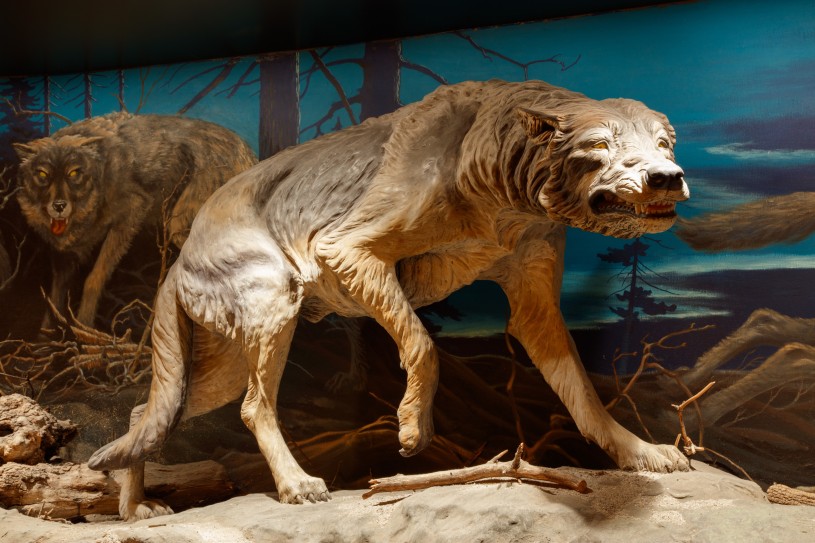
“Reading a draft of the paper for the first time gave me a chill, in a good way,” says Dr. Mairin Balisi, a postdoctoral research fellow at La Brea Tar Pits. For more than a hundred years, gray wolves were believed to be the closest living relatives to dire wolves. The news was surprising for Xaoming Wang, NHM’s Curator of Vertebrate Paleontology, as well, and he literally wrote the book on fossil dogs (Dogs: Their Fossil Relatives and Evolutionary History, by Columbia University Press).
“Paleontologists have long identified a number of morphological characters that seem to suggest a close relationship of the dire wolves and gray wolves, such as those done by Richard Tedford (Curator of American Museum of Natural History) and myself in 2009”, Wang says. Dire wolves were long thought to be cousins of gray wolves based on their morphology (anatomical features like bones and teeth). The rich presence of dire wolf remains in the fossil record, especially at La Brea Tar Pits, gave researchers a lot of material to study. “In the past, the only way we assess the relationships of various wolves are by looking at the shapes of their skulls and teeth preserved in fossils. If we see an overwhelming number of morphological similarities between dire wolves and gray wolves, we are likely to conclude that they are closely related, that is, sharing the common generic name Canis. Such a method of scientific classifications by identifying shared similarities between animals is still widely practiced today.”
While fossils were plentiful, ancient DNA (aDNA) was less so, and only accessible relatively recently. The reasons aren’t well understood yet, but researchers haven’t been able to extract aDNA from specimens recovered from asphalt sites like the Tar Pits, possibly due to the chemicals used to remove them from the asphalt. “We don’t know why aDNA has not yet been recovered from bones in asphalt, which preserves so many different tissues — this is an area of active research, and we now have collaborators looking at getting genetic information from Tar Pit-preserved plants and other bone proteins (such as those analyzed in this study),” says Emily Lindsey, Assistant Curator of La Brea Tar Pits. While the researchers behind this study didn’t recover any DNA from La Brea Tar Pits’ dire wolf collection, a specimen recovered from the Tar Pits did yield proteins that were analyzed for the paper. “When ancient DNA is recovered from dire wolves, the sheer quantity of genetic information stored in ancient DNA easily overwhelms our previous studies of a few morphological characters”, Wang says.
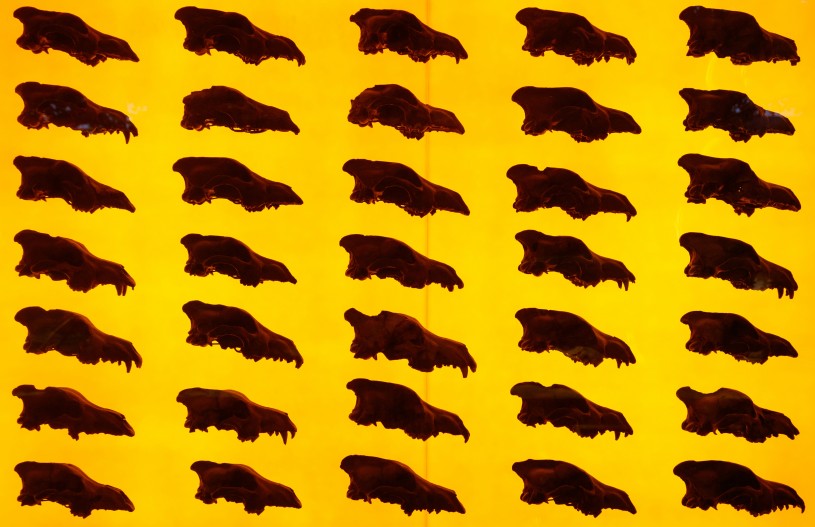
The international team behind the study looked at 46 samples of bones, ultimately only finding five with usable DNA. Comparing the data on dire wolves against the sequenced genomes of various other canines revealed a genetic gap large enough to rename dire wolves as the only species in a genus all their own. “We had thought that the dire and gray wolf lineages diverged two million years ago at most. Instead, the new paper shows a likely split nearly six million years ago,” says Balisi. Dire wolves have been reclassified from Canis dirus to Aenocyon dirus. “At this point, my question was: if not the gray wolf, then to which living dog species is the dire wolf most closely related? So I was glad that the paper has an answer for that, too: African jackals rather than North American Canis,” says Balisi. “Rather than looking only to the gray wolf for comparison, we can now also include African jackals as a possible reference.”
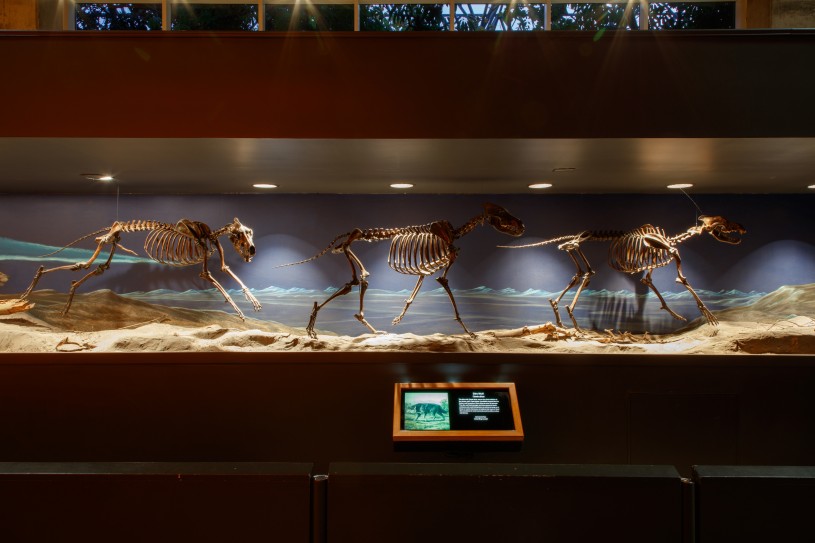
Like so many paleontological discoveries, dire wolves’ new classification creates new questions. “The new study thus raises the question of why dire wolves have independently evolved so many similar morphological characters in gray wolves? Are these due to their similar method of capturing prey?” asks Wang. “The new study could find no evidence of interbreeding between dire wolves and other ancient Canis, and thus these questions remain unanswered.” Paleontologists from NHM and La Brea Tar Pits will keep digging for more answers.
This evolution in nomenclature from Canis dirus to Aenocyon dirus was first proposed by paleontologist John Merriam in a 1918 issue of the University of California Bulletin of the Department of Geology. Entitled “Note on the Systematic Position of the Wolves of the Canis Dirus Group”, Merriam cites dire wolf specimens recovered from Rancho La Brea to propose reclassifying the animals as Aenocyon dirus, but the name was quickly discarded. Advancement in research over a hundred years later revived the name, exemplifying the importance of museum collections and the sometimes circuitous churn of creating new knowledge.
